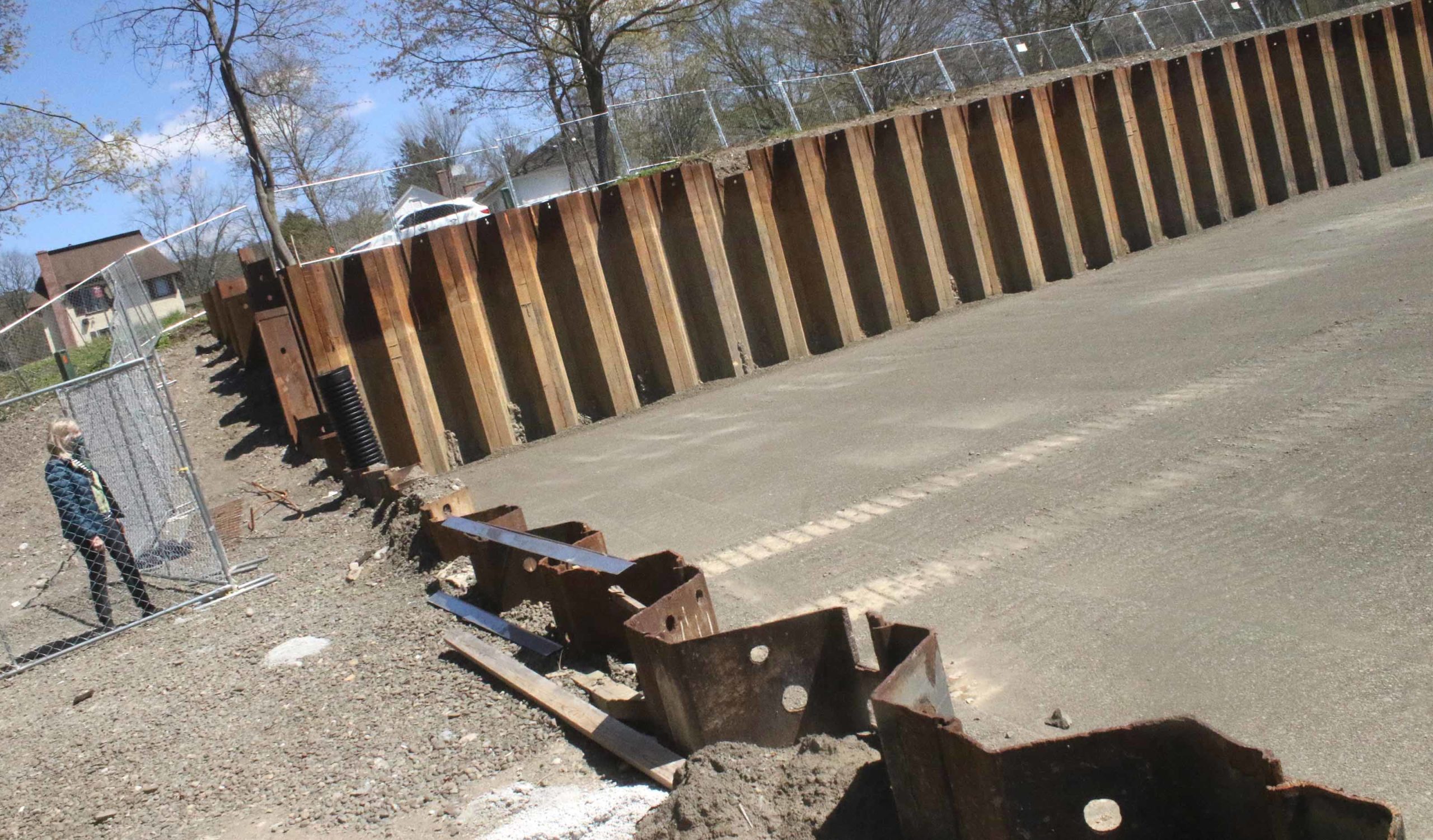$5M Redo of Doubleday
In Time For Anniversary

By JIM KEVLIN• Special to www.AllOTSEGO.com
COOPERSTOWN – “Personally, for me, The Sandlot Kid, in a place of prominence,” said Mayor Ellen Tillapaugh Kuch when asked about the most meaningful part of the $5-million-plus redevelopment of Doubleday Field. “He’s so special.”
Victor Salvatore’s bronze sculpture of a barefoot farm boy with a bat on his shoulder was installed in 1939, when the Doubleday Field grandstand was completed. “One of the true icons of the game,” the Dickson Baseball Dictionary calls it.
The mayor recalled her dismay in the 1990s when renovation around the statue made it look like it belonged to adjacent Key Bank, not the village and the baseball community everywhere. “He was fenced off and not given the space he deserved,” she said.
Now, it’s been moved to the center of the main, brick-covered walkway from Main Street to the grandstand entrance, to inspire and be admired by hundreds of thousands of fans heading into Classics and Hall of Fame award ceremonies in the years ahead.
“My favorite part is the grandstand piece,” said Trustee and Deputy Mayor Cindy Falk, a CGP historic preservationist who walks her dogs daily through the construction site. “We found ways to make this really fantastic structure increasingly accessible. Most of the stuff from that era is slipping away. We found a way to highlight it and keep it functional.”
“It looks beautiful,” said former mayor Jeff Katz; the planning began in his administration. He cited the new archway, the prospective informational signage, the pedestrian walkway, The Sandlot Kid.
“Those are just a handful of things that people said could never get fixed – they’ve gotten fixed, and they are continuing to be fixed,” said Katz, a baseball writer who is also president of the Friends of Doubleday, a private fundraising entity.
The rethinking of the Doubleday parking lot and renovation of the 1939 grandstand was supposed to be finished by last Friday, May 15. But with the COVID-19 threat cancelling the May 17 Hall of Fame Classic game, the urgency dissipated. The mayor says the work will now wrap up in mid-June.
Also remaining is the redevelopment of the third-base bleachers. When the 1950s-era cement seats were removed last year, the soil beneath was too soft to support and bleachers, rest rooms, offices and pavilion planned there.
Delaware Engineers and Saratoga Associates, a landscaping firm, are now conducting “value engineering” to see how much of the original plan the village might still afford, the mayor said. That work may be delayed until 2021.
But that did little to allay the mayor’s excitement at what has been done since May 21, 2018, when she and state Sen. Jim Seward, R-Milford, announced a $1 million grant from his office and another $3 million in anticipated state funding to renovate the Doubleday Field property just a few months past its 100th anniversary on Sept. 6, 2019.
Then-Assemblyman Bill Magee, D-Nelson, came up with another $1 million grant that December.
The grandstand, a WPA project, was completed in May 1939, in time for the Baseball Hall of Fame’s first Induction of Babe Ruth and five other early heroes of the game. So this month is that structure’s 80th anniversary.
In a tour of the near-complete site the other day, the mayor was enthusiastic throughout, from the new “Doubleday Field” entrance archway at Main Street, to the sweep of pedestrian walkways on the parking lot’s east and west side, to the burial of all electrical conduits leading to the historic grandstand, a $300,000 project. (If those are your sneakers thrown over the wire, claim them now.)
The outer walls have been repaired, using some of the original shiny yellow-brown tile saved from previous repair jobs. The gable, vintage lighting and the sign on the front entrance are repaired and painted, and will be illuminated by spotlights set in the new brick sidewalk below.
Inside the grandstand, handrails have been installed for the first time. The painting and repairs are being finished. The pressbox – it was discovered the support posts were rotten – had to be repaired. The dugouts, damp and earthen-floored, have been renovated.
The one disappointment is the cavernous depression along the third-base line, but that has been
stabilized sufficiently to allow the new plan, when determined and funded – with perhaps a mezzanine instead of a pavilion – to go forward.
On the way out, the mayor paused at a doggy water fountain, attached to one for human beings, at the entry arch.
Back on Main Street, the mayor points out that the $2.2 million federally funded TEP (for Transportation Enhancement Program) – in the works for seven years – is being completed at almost exactly the same time.
She pointed out the two sets of poles to string promotional banners across Main Street – one at Key Bank, the other at the former general store. At Main and Chestnut, the new traffic signal and pedestrian walkway lights went into service last Friday, May 15.
She is particularly looking forward to the installing of new “way-finding” signs, in a design developed by the late Art Calhoun in his metal-working shop on Linden Avenue.
One side will direct visitors to local shops, restaurants and attractions; the flip side will be interpretive, one detailing The Doubleday Myth, another Otsego Lake, others the Clark and Cooper families’ contributions.
Katz called the lack of interpretive signage “a time-honored problem … Everything that’s happening now is addressing decades-old issues – group space, beautification. Some study in the 1970s said the Doubleday parking lot was the only example of urban blight in the village.”
“In the’40s, the Bursey playground was there. There were gazebos there. It’s just a thrill to see it’s moving forward,” he said.

